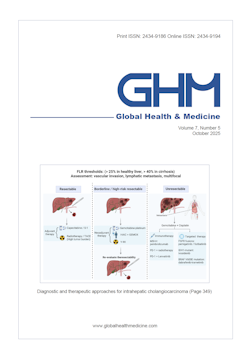Global Health & Medicine 2021;3(5):253-261.
Regional progress towards hepatitis C elimination in the Western Pacific Region, 2015-2020
Chan PL, Le LN, Ishikawa N, Easterbrook P
Chronic hepatitis C (HCV) infection is a major global public health threat and in 2019 there were an estimated 58 million infected globally and 290,000 deaths. Elimination of viral hepatitis B/C as a public health threat by 2030 is defined as a 90% incidence reduction and a 65% mortality reduction. The Western Pacific region is one of the most affected regions with 10 million people living with HCV, one-fifth of the global burden. We review progress towards HCV elimination in the Western Pacific region since 2015. Key developments in the region, which comprises of 37 high-and-middle-income countries, include the following: 20 countries have national hepatitis action plans, 19 have conducted recent disease burden and investment cases, 10 have scaled-up hepatitis services at primary health care level, and in 11 countries, domestic financing including social health insurance support DAA costs. We highlight six countries' experience in navigating the path towards HCV elimination: Cambodia, China, Malaysia, Mongolia, Philippines, and Viet Nam. Future initiatives to accelerate elimination are expanding access to community-based testing using HCV point-of-care tests among at-risk and general populations; adopting decentralized and integrated HCV one-stop services at harm reduction sites, detention settings and primary care; expanding treatment to include children and adolescents; address stigma and discrimination; and ensuring sustainable financing through domestic resources to scale-up testing, treatment and prevention. The COVID-19 pandemic has a significant impact on hepatitis response across the region on community and facility-based testing, treatment initiation, monitoring and cancer screening, which is projected to delay elimination goals.
DOI: 10.35772/ghm.2021.01065







